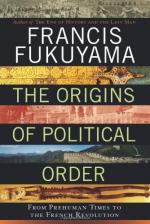
|
| Name: _________________________ | Period: ___________________ |
This test consists of 15 multiple choice questions and 5 short answer questions.
Multiple Choice Questions
1. When was Constantinople taken by the Turks?
(a) 1235.
(b) 1569
(c) 1469.
(d) 1453.
2. When was the Duma reinstated after Peter the Great?
(a) 1956.
(b) 1924.
(c) 1992.
(d) 1906.
3. When did the Kwangju massacre take place?
(a) 1983.
(b) 1982.
(c) 1980.
(d) 1981.
4. When did the Battle of Lepanto take place?
(a) 1524.
(b) 1589.
(c) 1571.
(d) 1526.
5. How many taels of silver were left in the Chinese treasury in the early 17th century China?
(a) 170,000.
(b) 70,000.
(c) 270,000.
(d) 370,000.
6. What are the Shastras according to Chapter 19?
(a) The first law.
(b) God's spoken words.
(c) The law for the men.
(d) The bad law.
7. When did the Republic of China move to Taiwan according to Chapter 20?
(a) 1956.
(b) 1949.
(c) 1958.
(d) 152.
8. When did King Bela III die?
(a) 1203.
(b) 1240.
(c) 1196.
(d) 1159.
9. When did Louis XIV die?
(a) 1725.
(b) 1735.
(c) 1715.
(d) 1705.
10. What was the German state that emerged in Brandenburg-Prussia in the eighteenth century based on?
(a) Merit based bureaucracy.
(b) Filial based bureaucracy.
(c) Connection based bureaucracy.
(d) Wealth based bureaucracy.
11. When did Peter the Great die?
(a) 1766.
(b) 1752.
(c) 1725.
(d) 1749.
12. How much land did the Catholic Church own in Denmark in 1536?
(a) 60%.
(b) 40%.
(c) 50%.
(d) 30%.
13. When did Sir Edward Coke die?
(a) 1659.
(b) 1634.
(c) 1653
(d) 1532.
14. Who gave the definition of institutions as "stable, valued, recurring patterns of behavior"?
(a) Ray Huang.
(b) Samuel Huntington.
(c) Francis Fukuyama.
(d) Koenraad W. Swart.
15. When did the Mongols enter Hungary?
(a) 1241.
(b) 1256.
(c) 1243.
(d) 1248.
Short Answer Questions
1. When was the Table of Ranks put in place in Russia?
2. When did the Romanov of Russia gain power according to Chapter 21?
3. What was the Ancien régime France an early prototype of?
4. How much land did the French peasants own at the eve of the Revolution?
5. When was an examination system put back in place in China?
|
This section contains 236 words (approx. 1 page at 300 words per page) |

|




